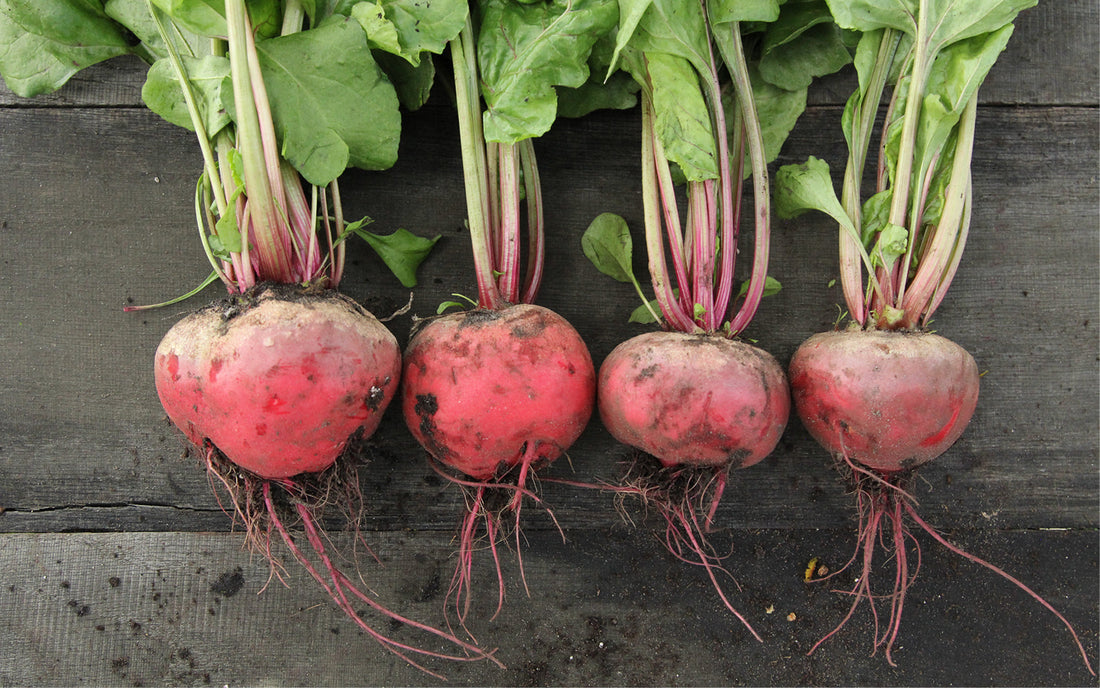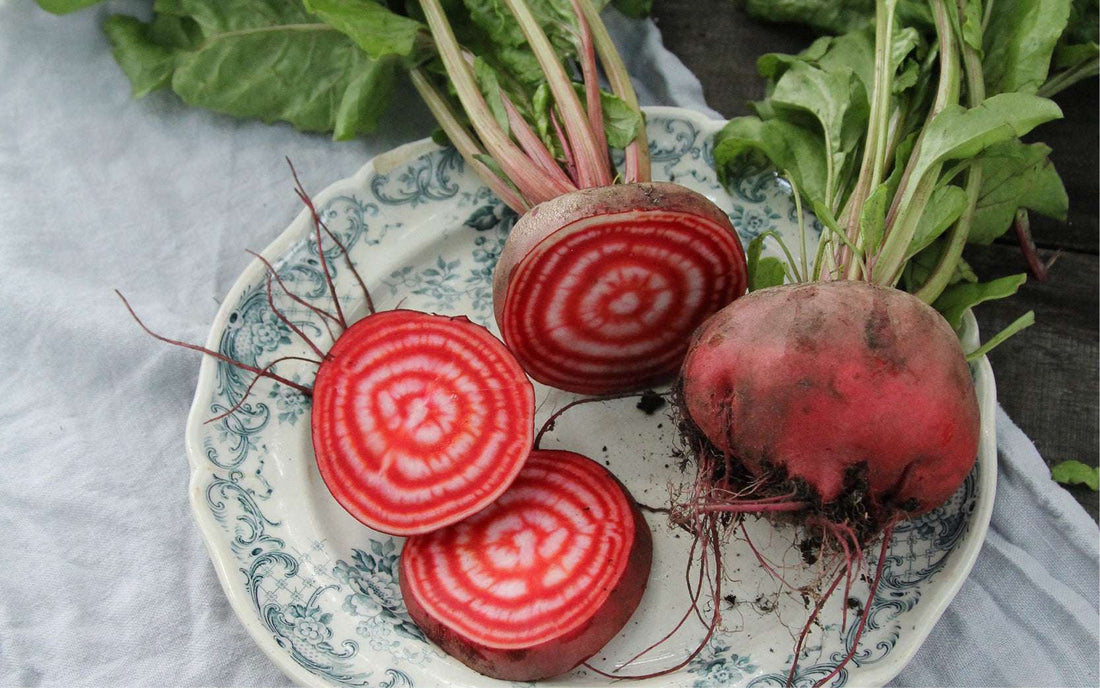Beetroot (Beta vulgaris)
If you have three to four months to spare and enjoy its sweet and spicy flavor, beetroot is the ideal plant for your vegetable garden. This easy-to-grow plant comes in many different varieties and can be eaten raw or cooked. The young tubers have a mild, sweet flavor: a true delight that's worth growing.

Planting time – When is best?
Sowing can begin in mid- to late May, as soon as the climate is mild and the risk of frost has passed. However, if this cannot be ruled out, sow indoors in early spring and plant the seedlings in the garden in May/June.
Growing beetroot – how does it work?
When sowing under cover, place two seeds in each pot. You can later pull out the weaker seedling and plant out the stronger one when it's about 5 cm tall.
If sowing is to take place directly into the garden bed, the soil temperature must be consistently above 7 degrees Celsius. The row spacing should be 30 cm, and the planting distance 10 cm. The seed furrows should be about 3 cm deep. If the red tubers are to be harvested at a smaller size, a smaller seed and row spacing is sufficient.
Location – Where is best?
Beets are not particularly demanding, but thrive in light, sandy soils in sunny locations. It's especially helpful if you work the soil well with rotted manure or compost before sowing.

Care – What needs to be done?
Once the roots have grown larger, you should water sparingly, as too much water will stimulate leaf growth too much. However, during dry periods, you may need a little more water. Hoeing and weeding are also important to keep the rows consistently free of weeds. It's best to fertilize once or twice with an algae-based foliar fertilizer to provide the nodules with the necessary minerals.
Harvest – What should you consider?
The young varieties are harvested from early July until the first frosts, while the later varieties are harvested in September and October. When the first beets reach the size of a chicken egg, you can pull some of them from the rows. The remaining plants then have better growing conditions, and even the small plants are ready to eat.
Digging up the mature roots is best done with a digging fork. Cut off the stem base and the root, and let the beets rest in the bed for two days to allow them to lose moisture. Storage in a cool, dry place, such as a cellar, is recommended.
Mixed culture – What are good neighbors?
Good partners are garlic, celery, cabbage, dill, fennel and beans (except runner beans).
Botany – What kind of plant is this?
Beetroot belongs to the Amaranth family and is also called "red beet" or "red beet." Its characteristic feature is its usually red tuber, which terminates in a stem with leaves. These leaves are arranged in a rosette and have a 15 to 30 cm long blade. But beets aren't just red; depending on the variety, there are also orange, yellow, white, and pink beets. Their shape also varies, from round to cone-shaped or horn-shaped. However, the most common commercially available tubers are still the large, red ones.
Beetroot is rich in vitamin B, potassium, and iron and is considered extremely healthy both raw and cooked. However, beetroot contains high levels of oxalic acid, so people with a predisposition to kidney stone formation should only consume the slightly sour-tasting beetroot in moderation.
Cultural history – How did beetroot come to us?
Beetroot is related to sugar beet and chard and is a cultivated form of the common turnip. This red tuber originates from the Mediterranean region, presumably North Africa. It later arrived in Central Europe with the Romans. Its characteristic red color was only established through breeding in the 19th and 20th centuries.
The tuber's bright red color is due to its high concentration of betanin and anthocyanin. The juice is used in food production as a natural coloring agent. Dishes such as the northern German "Labskaus" or the Eastern European "Borscht" derive their typical color from beetroot.
Today, the large red tubers from the weekly market or the sweet and sour pickled beetroot from the jar are particularly well known.
TEXT: Merle Hildebrandt








































































































